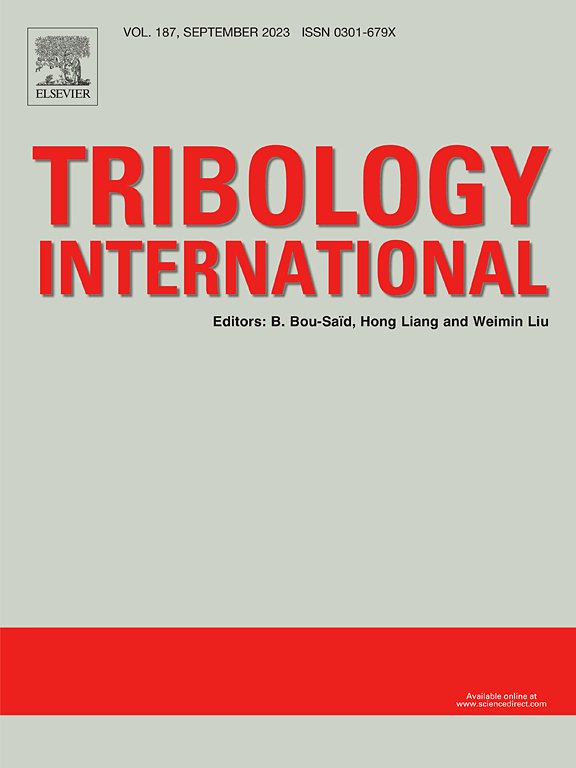Optimizing heat transportation features of magneto-Carreau nanofluid flow through novel machine learning algorithm with the immersion of chemical process for inclined cylindrical surface
IF 6.1
1区 工程技术
Q1 ENGINEERING, MECHANICAL
引用次数: 0
Abstract
Heat transfer in a mixed bioconvection flow of gyrotactic microorganisms and a Carreau nanofluid model across stretchable cylinder with fluctuating magnetic field effect and binary chemical reactions is investigated in this study. The study focuses on fluctuating heat source changes and non-uniform thermal conductivity patterns. This nano-bioconvection flow example is estimated using a passively controlled nanofluid pattern, which is thought to be more physically accurate than actively controlled nanofluids. With the help of the Levenberg-Marquardt backpropagation algorithm and non-linear autoregressive with exogenous inputs (LMBA-NARX), a stochastic technique, the goal of this research project is to describe the model and valuation of a differential mathematical system of the effect of bioconvection and chemical reaction on Magneto-Carreau nano fluid. This will make it possible to calculate the dynamics in a more precise, trustworthy, and proficient manner. Using the Mathematica software’s Adams approach, a reference dataset for LMBA-NARX is created for the many significant parameters of the model including curvature parameter λ, magnetic field M, mixed convection Ri, power law index n, Prandtl number Pr and Buoyancy free ration factor Nr representing different situations. In order to improve and compete the estimated outcomes with standard solutions, the outcomes of reference data are trained by including eighty percent for training and twenty percent for validation and testing methods. The stability and accuracy of LMBA-NARX is endorsed through mean square error fitness curves, regression analysis, autocorrelation of error, correlation between input and error, measured by histogram plots and evaluation of absolute errors. The exceptional measures of performance in terms of MSE are attained at level 9.5557E-13, 3.1914E-13, 4.23333E-13, 2.3363E-11, 5.2793E-15, 2.0728E-15 and 2.7701E-11 against 128, 66, 58, 73, 115, 73 and 78 epochs. The Carreau nanofluid’s velocity goes down with the increase in curvature, magnetic field, mixed convection, power law index, and buoyancy force ratio factor and the temperature of the Carreau nanofluid is inversely proportional to curvature and Prandtl number.
利用新型机器学习算法优化磁卡罗纳米流体在倾斜圆柱表面化学过程的传热特性
本研究探讨了具有波动磁场效应和二元化学反应的可伸缩圆柱体上的回旋微生物和 Carreau 纳米流体模型混合生物对流中的传热问题。研究的重点是波动热源变化和非均匀导热模式。该纳米生物对流模型采用被动控制的纳米流体模式进行估算,这种模式被认为比主动控制的纳米流体在物理上更为精确。在 Levenberg-Marquardt 反向传播算法和非线性自回归外生输入(LMBA-NARX)(一种随机技术)的帮助下,本研究项目的目标是描述生物对流和化学反应对磁卡鲁纳米流体影响的微分数学系统的模型和估值。这将使动力学计算更加精确、可靠和熟练成为可能。利用 Mathematica 软件的亚当斯方法,为 LMBA-NARX 模型的许多重要参数创建了参考数据集,这些参数包括曲率参数 λ、磁场 M、混合对流 Ri、幂律指数 n、普朗特数 Pr 和浮力自由配比系数 Nr,它们代表了不同的情况。为了改进估计结果并使之与标准解相媲美,对参考数据的结果进行了训练,其中 80% 用于训练,20% 用于验证和测试方法。LMBA-NARX 的稳定性和准确性通过均方误差适配曲线、回归分析、误差的自相关性、输入与误差之间的相关性(通过直方图测量)以及绝对误差评估得到认可。在 128、66、58、73、115、73 和 78 个历时中,MSE 分别达到了 9.5557E-13、3.1914E-13、4.23333E-13、2.3363E-11、5.2793E-15、2.0728E-15 和 2.7701E-11 的优异水平。卡氏纳米流体的速度随着曲率、磁场、混合对流、幂律指数和浮力比系数的增加而降低,卡氏纳米流体的温度与曲率和普朗特数成反比。
本文章由计算机程序翻译,如有差异,请以英文原文为准。
求助全文
约1分钟内获得全文
求助全文
来源期刊

Tribology International
工程技术-工程:机械
CiteScore
10.10
自引率
16.10%
发文量
627
审稿时长
35 days
期刊介绍:
Tribology is the science of rubbing surfaces and contributes to every facet of our everyday life, from live cell friction to engine lubrication and seismology. As such tribology is truly multidisciplinary and this extraordinary breadth of scientific interest is reflected in the scope of Tribology International.
Tribology International seeks to publish original research papers of the highest scientific quality to provide an archival resource for scientists from all backgrounds. Written contributions are invited reporting experimental and modelling studies both in established areas of tribology and emerging fields. Scientific topics include the physics or chemistry of tribo-surfaces, bio-tribology, surface engineering and materials, contact mechanics, nano-tribology, lubricants and hydrodynamic lubrication.
 求助内容:
求助内容: 应助结果提醒方式:
应助结果提醒方式:


